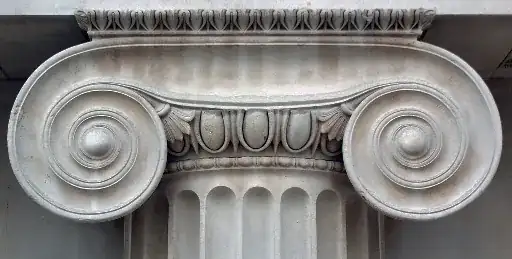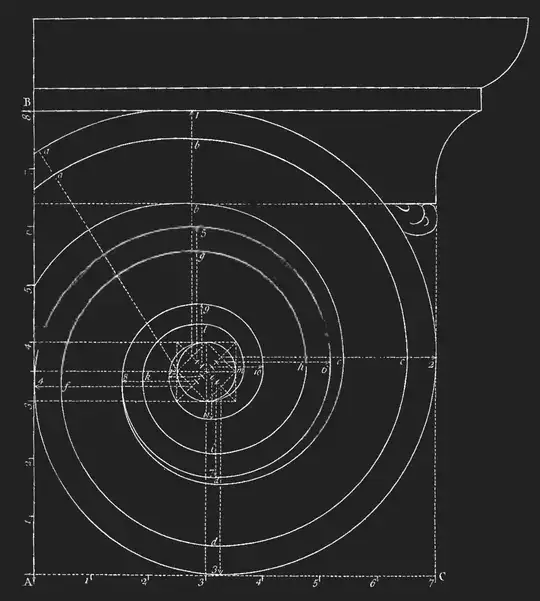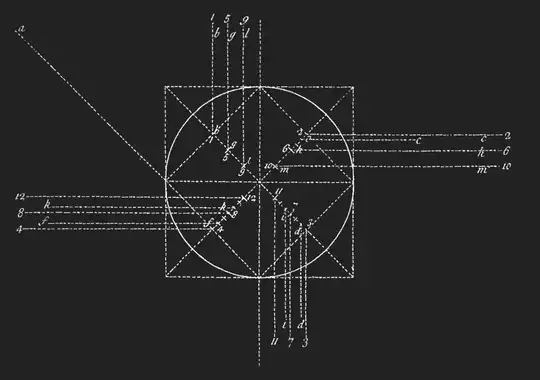Ionic is one of the Classical Orders of architecture. A capital is the top portion of a column. The Ionic capital looks like this:
The spirals on either side are the volutes.
Various architects have given in-depth descriptions of how to draw these spirals, including Vignola in 1562 and Gibbs in 1753. In essence, their method looks like this:
Starting with a vertical line AB divided into 8 parts. Take 7 of these parts to create a horizontal line AC in order to describe a grid:
The eye is a circle whose diameter corresponds to one of these parts, and is placed as indicated above. A square rotated 45° is inscribed within the eye. It is bisected across the midpoints of its edges, and these bisectors are further divided into six equal parts:
Here is how you draw the spiral: You start with point 1 as the center of the circle, and follow it up to the top of the grid to get the initial radius. You draw this circle until it intersects the line 2.
Then you move the center to point 2, and draw until you hit line 3. Then you move the center to line 3 and draw until you hit line 4. This is repeated until your spiral intersects with the circle of the eye.
If that description wasn't sufficiently helpful, here is a video demonstrating (a slightly different version of) this technique.
My question is the following: Is this method of drawing a spiral meant to approximate a specific kind of mathematical spiral?
I know it's not Archimedean, but there are a bunch of other types of spiral. Which one of them is closest to this?



